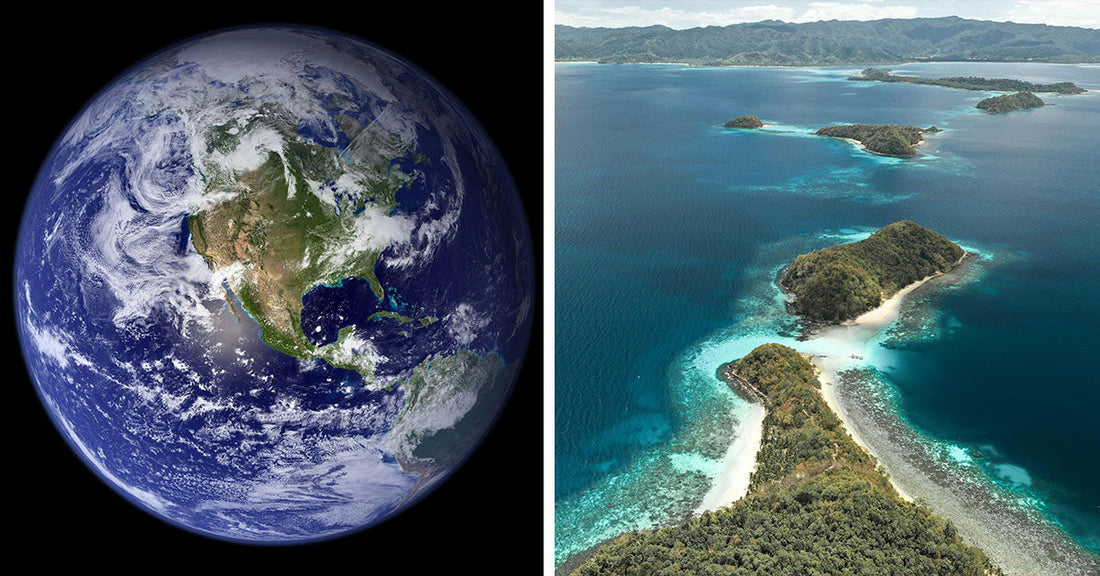The Pacific Ocean Is Shrinking And A New Supercontinent Is Forming
Matthew Russell
The Pacific Ocean, Earth’s largest and deepest body of water, is shrinking.
It isn’t dramatic or immediate. The changes occur in centimeters per year, but they add up. With every passing decade, the distance between Asia, Australia, and the Americas closes ever so slightly. And according to scientists, that slow-motion drift will one day result in the total closure of the Pacific Basin and the birth of a new supercontinent: Amasia.

The Pacific Ocean is shrinking by a few centimeters every year.
The Science Behind the Shrink
The reason behind this shift lies in plate tectonics—the process that moves the Earth's crust like pieces on a giant conveyor belt. Beneath the Pacific lies a network of subduction zones, areas where oceanic plates dive beneath continental ones and disappear into the mantle. This network, known as the Ring of Fire, acts like a planetary drain pulling the Pacific inward.
As Science ABC explains, subduction is essentially the Earth’s recycling system. While the seafloor spreads and creates new crust at underwater ridges, old crust gets pulled back into the Earth through subduction. The Atlantic Ocean, which has fewer subduction zones, continues to grow, but the Pacific—hemmed in by them—shrinks.
Researchers estimate the Pacific is shrinking at a rate of about 0.5 square kilometers per year, equivalent to roughly an inch annually across major fault lines, according to Vice.

Subduction zones around the Pacific act like planetary drains.
Modeling the Future
A recent study by scientists at Curtin University and Peking University used supercomputers to simulate the future of Earth’s continents. Their findings, published in National Science Review, suggest the Pacific will fully disappear within the next 200 to 300 million years, giving rise to a new supercontinent they’ve named Amasia. This model was based on tectonic activity trends, including the weakening of the oceanic lithosphere over time—essentially the crust and upper mantle that supports the ocean floor—which has been softening as the planet cools over geological time.
The lead researcher, Dr. Chuan Huang, told CNN that the shrinking Pacific is a direct continuation of a cycle seen throughout Earth’s history. Roughly every 600 million years, the continents merge into a single landmass. We’re overdue.

The Pacific is the oldest ocean on Earth, dating back over 700 million years.
The Birth of Amasia
If the simulations are correct, Australia will be the first to make contact, sliding northward into Southeast Asia. From there, the Americas will follow suit, drifting westward until they fuse with Asia. This continental pile-up would eliminate the Pacific Ocean entirely and form a massive supercontinent in the planet’s northern hemisphere.
As FOX Weather reports, Amasia will stand where the Pacific once ruled. The Atlantic and Indian oceans will remain, reshaping global geography.
Not everyone agrees on the exact layout. Some models suggest other configurations—like Novopangaea or Aurica—but most modern studies lean toward the Pacific closing rather than the Atlantic, thanks to the Pacific’s age and geological complexity. It’s the oldest ocean, dating back over 700 million years, and is the remnant of the Panthalassa superocean that surrounded Pangaea.

The Atlantic Ocean is expanding while the Pacific contracts.
What This Means for Life on Earth
The disappearance of the Pacific will have drastic consequences.
First, Earth’s climate will change. Ocean currents, which regulate temperature and distribute nutrients, will be disrupted. As India Narrative reports, past continental shifts have triggered changes like the formation of the Antarctic ice cap. Without the vast Pacific to move heat around the globe, inland areas of Amasia could become arid and experience extreme temperature swings.
Second, biodiversity could decline. A single landmass surrounded by a single ocean would limit marine ecosystems and reduce the range of habitats for terrestrial life. With no Pacific, the species that depend on its currents, temperatures, and habitats could disappear.
Seismic activity would also increase. As plates crash together to form Amasia, earthquakes and volcanic eruptions will likely be more common, as has happened for millions of years in subduction zones like the Himalayas and the Andes.

Amasia is the predicted name of Earth’s next supercontinent.
A Planet Always in Motion
The continents we know today—North America, Africa, Australia, and the rest—are just a phase in Earth’s long history. Before Pangaea, there was Rodinia. Before Rodinia, Columbia. And in 300 million years, Amasia could take their place.
As World Atlas reports, Earth is never still. What looks permanent is, in fact, temporary. Oceans widen and shrink. Continents drift, crash, and rise again.
The Pacific’s retreat is a slow but powerful force. It won’t vanish tomorrow. But the path is clear. And for those willing to look beyond the span of human lifetimes, it tells a story of a living, shifting Earth where nothing stays the same forever.

